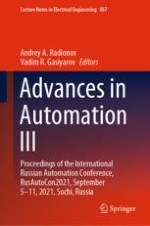2022 | OriginalPaper | Buchkapitel
Influence of Perovskite Layer Parameters and Back Contact Material on Characteristics of Solar Cells
verfasst von : A. Sayenko, S. Malyukov, A. Palii
Erschienen in: Advances in Automation III
Aktivieren Sie unsere intelligente Suche, um passende Fachinhalte oder Patente zu finden.
Wählen Sie Textabschnitte aus um mit Künstlicher Intelligenz passenden Patente zu finden. powered by
Markieren Sie Textabschnitte, um KI-gestützt weitere passende Inhalte zu finden. powered by
